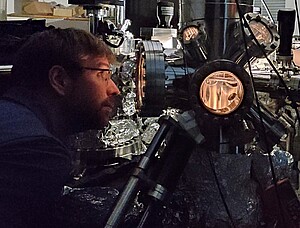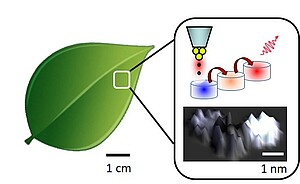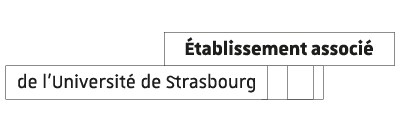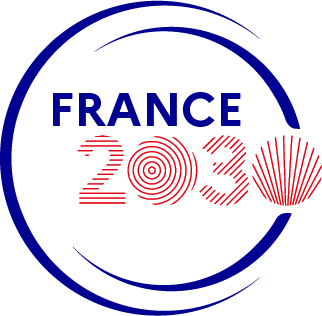Anna Rosławska and Guillaume Schull, who are researchers at the Surfaces et interfaces department of the Institut de physique et de chimie des matériaux de Strasbourg (IPCMS) have succeeded in reproducing the energy transfer at work in plant photosynthesis using a model composed of three pigments (organic molecules).
Guillaume Schull’s team work at the scale of a single molecule. Within this context, it launched a study of a system linked to photosynthesis. This was a first for the researcher. I didn’t know anything about the field and I found it fascinating to see how, during photosynthesis, plant leaves absorb solar energy and transform it into chemical energy. The ultimate goal is to understand how energy can be transferred from the light-collecting areas to the area responsible for using it, in such an efficient way.
During this process, a pigment in the leaf captures the photon, which jumps from pigment to pigment until it reaches the reaction centre of the plant, where it is transformed into an electron and thus into energy. This moment, during which the energy moves from one pigment to another, remains a mystery to researchers, who suspect what are known as coherent phenomena, which are specific to quantum physics.
Photosynthesis in reverse
To further their understanding, Guillaume Schull and his team reproduced photosynthesis “in reverse”, by using electrons, which are easy to work with, rather than photons as the source of stimulation: We stimulated the input pigment with an electric current and observed the transfer of energy via the second pigment to the third one, which transformed it into a photon
, explains Guillaume Schull, who was thus able to reproduce the energy transfer that takes place in a plant, using only three pigments, manipulated by scanning tunneling microscopy and supplied by researchers in Besançon.
In particular, we were able to recreate a “staircase” effect, whereby the energy is transmitted from molecule to molecule according to their ability to absorb high-energy photons (top step of the staircase) or low-energy photons (bottom step of the staircase). These successive energy jumps can be hindered or facilitated by the presence of intermediary pigments. It is the crucial role played by these pigments that our experiment highlights.
Synthetic materials inspired by nature
The experiments that were conducted also suggested that two mechanisms are involved in the process of transfer of energy. Although, for the moment, we are unable to exactly determine the relative importance of each one
, explains Guillaume Schull, who points out that the first one is purely quantum and corresponds to a tunnel effect occurring at very short distances between the pigments. The second corresponds to a dipole-dipole effect that remains effective at greater distances.
The idea now is to go further in mimicking the structure of the plant, by including a greater number of pigments and a ring-shaped organisation. By understanding how nature works, we may be able to produce more efficient synthetic materials, enabling us to make better use of solar energy
, concludes the researcher.
Marion Riegert

















